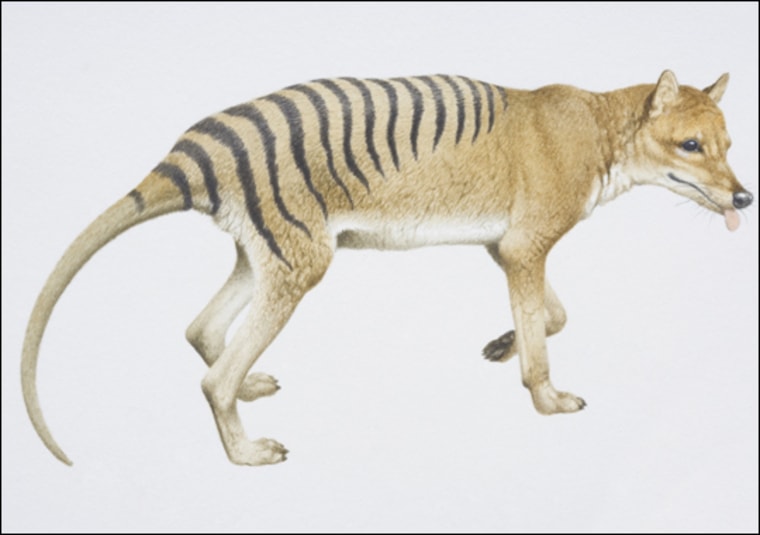Until recently, little was known about the mysterious Tasmanian tiger, but new DNA sequences of the dog-like marsupial shed light on the striped creature's surprising family tree and its extinction 73 years ago.
Researchers now believe the Tasmanian tiger, also called the thylacine, went extinct in 1936 after the death of the last known surviving individual at a Tasmanian zoo, and four decades after genetic diversity within the species dropped to a critically dangerous low.
It's thought that the thylacine's path to extinction, however, began much earlier.
"Thylacines were eliminated from mainland Australia around 3,000 years ago, perhaps because of competition from dingos, so the extinction process started that early," said Webb Miller, who led the new study, which is published online in Genome Research.
"Between 1803, when Tasmania was settled by Europeans, and the 1930s, pressure was put on thylacines, including bounties, because of supposed predation of sheep," added Miller, a Penn State biology professor. "Apparently a disease epidemic swept through the thylacine population around 1900 to 1910, which didn't do them any good, but it is difficult to say how much, if any, that affected their extinction."
Miller and his team used state-of-the-art DNA sequencing technology to analyze the hair of two preserved specimens: a female thylacine that died at the London Zoo in 1893, and a male brought to the National Zoo in 1902 that died three years later.
Although the two thylacines were continents apart, their mitochondrial DNA — a portion of the genome passed on via the maternal line — was nearly identical, illustrating the species' ultra-low genetic diversity around the turn of the 20th century.
The DNA analysis also determined that, despite the fact that the thylacine resembled a cross between a dog and a tiger, it was a marsupial closely related to striped insect-eaters called numbats, and more distantly to kangaroos and koalas.
The "museomics" process is so detailed that the scientists could even identify microbes, viruses and other organisms present on the remains of the two thylacines, one of which had been dried by a taxidermist, the other stored in ethanol.
Oliver Ryder, associate director of genetics at San Diego Zoo Conservation Research, told Discovery News that the study "is a remarkable accomplishment."
"The prospect that comparison of mitochondrial sequences of ancient DNA samples could provide information useful for understanding the process of extinction ... can be immediately applied to currently endangered species," he added.
One such endangered species is the Tasmanian devil, currently threatened by dangerously low genetic diversity and an fast-spreading, deadly cancer outbreak.
Anders Gotherstrom, a research fellow at the Royal Swedish Academy of Science who worked with Miller on the study, echoed Ryder's view.
"We are in the middle of one of the largest mass extinctions ever, and this kind of data from a species that did not survive is very interesting," Gotherstrom told Discovery News.
